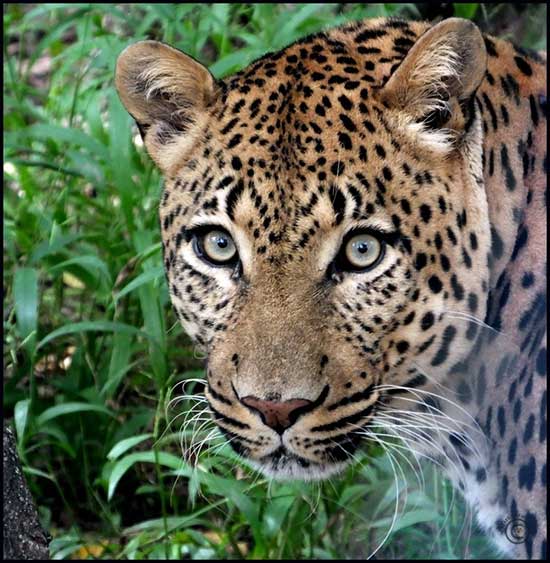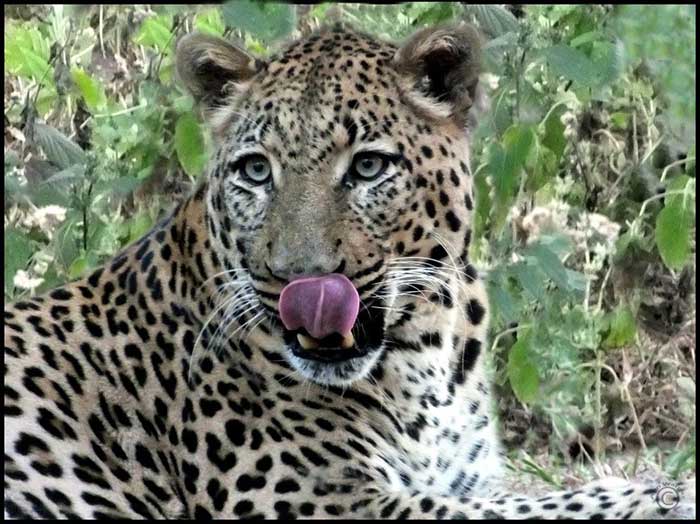The Leopard’s coat does not belong on humans
By Ann Warner
This beautiful cat is recognisable by its coat of yellowish-brown to gold fur, and is covered in spots which are arranged in rosettes that are unique to each individual leopard. These rosettes being more prominent on their backs, flanks and hindquarters, fading towards their white underbellies and inside their legs.
Having a muscular body, relatively short limbs and a broad head, this cat is known for its immense strength and climbing ability, which it uses to move heavy carcasses. They have often been observed resting on branches during the day after dragging their kills up into trees and hanging them there for safe-keeping.
They are powerful swimmers, although not as disposed to swimming as some other big cats, such as the tiger of Asia. They are very agile, being able to run at speeds of over 58 kilometres per hour, leap over six metres horizontally, and jump up to three metres vertically.

Males occupy territories that often overlap with a few smaller female territories, probably as a strategy to enhance access to females. Being solitary individuals, they only associate in the mating season, although mothers might continue interacting with cubs after weaning. Aggressive encounters are rare, and usually only occur when territories need defending.
Leopards communicate with each other through the long grasses with the white spots on the ears and tail. They also growl, snarl, meow and purr. Roaring in leopards consist mainly of grunts known as ‘sawing’, as it sounds like one is sawing wood.
The leopard is a carnivore, and will tackle prey as heavy as kudu and giraffe if lions are absent in the area, but they mainly feed on antelope, warthogs and primates to name but a few, this can also include cattle. Small kills are eaten immediately, while large kills are hidden to be consumed later. Depending on its acute sense of smell and excellent vision, hunting is primarily a nocturnal activity although they have, on occasion, been seen hunting in the day.
Cubs are usually born in a litter of two to four; the mortality rate of cubs during the first year is between 41 and 50%. Giving birth in a cave, crevice among boulders or a thicket to make a den, the cubs arrive with their eyes closed and these will only open after nine days. At around three months old, they begin to follow their mother on hunts. At a year old they could probably fend for themselves, but will remain with their mother until 18 or 24 months. Life span in the wild is usually between 12 and 17 years, and approximately 21 years in captivity.
These large cats can live in almost any type of territory, including rainforests, deserts, woodlands, grassland savannas, forests, mountains, coastal scrubs, shrub lands and swampy areas, in fact, leopards live in more varied habitats than any other large cat.
They have long been hunted for their exotic, lush and soft fur, being used to make coats and ceremonial robes as well as for their claws, whiskers, and tails, which are popular as fetishes.
Leopards are no longer present in approximately 40 percent of their historic habitats, and are classified as near threatened by the IUCN’s Red List of Threatened Species, due to their declining population, which is caused by habitat loss and hunting.
This is another beautiful animal that will go extinct if something is not done to protect it very soon!
Thank you Ann Warner,
Ref: Wikipedia. Live Science.

